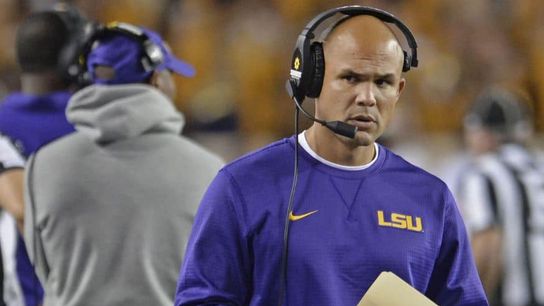When the announcement of LSU defensive coordinator Dave Aranda's new record-setting $10 million deal, where he turned down Jimbo Fisher to stay in Baton Rouge broke last night, I came across an interesting article, originally shared back in August, from TigerRag about how the defensive mastermind approaches film breakdown.
...and when a coordinator, who just inked a deal to make him the highest paid play caller in the history of college football at $2.5 million per year, shares tips for how he's breaking down game tape, it's simply something that needs to be shared.
For starters, the piece notes that Aranda will watch games three times, taking a serious amount of notes each time, and studying something a bit different each time through.
The first time going through the film, Aranda wants to get a sense for the "personality of the offense," and get a feel for the play calling history of the guy calling the shots on offense. From TigerRag:
"You want to see that in previous instances, this offense has done this. What an offense does against pressure packages or how they respond when rattled. What an offense does when it feels it’s in control of a game. You’re trying to figure out these things as if to write a personality profile of the offense. From there you try to predict what could happen in given situations. Then you read back on the guys that’re calling the plays and their lineage. Who they learned from and what their personality is."
The second time through, Aranda looks for very specific tendencies in the alignment of players, the splits of the offensive line, how much weight guys put on their hands for certain plays and schemes, and trying to get a tendency read on if the quarterback tips which side of the defense he's going to be reading pre-snap.
The third, and final time through for Aranda, he zeros in on plays.
"You’re looking for things like against this front they like this running play or against that coverage they’ll adjust right into coverage beaters. So if you’re in one-high (safety), they might try to rub or pick you and if you’re in two-high, they’re going to run post routes. Whatever it is. As you’re watching it, you can look at it three times and see those three different things."
Do you have a similar unique way of approaching or processing film breakdown? Something that coaches young and old could learn from? Share it via email with me at doug@footballscoop.com.
